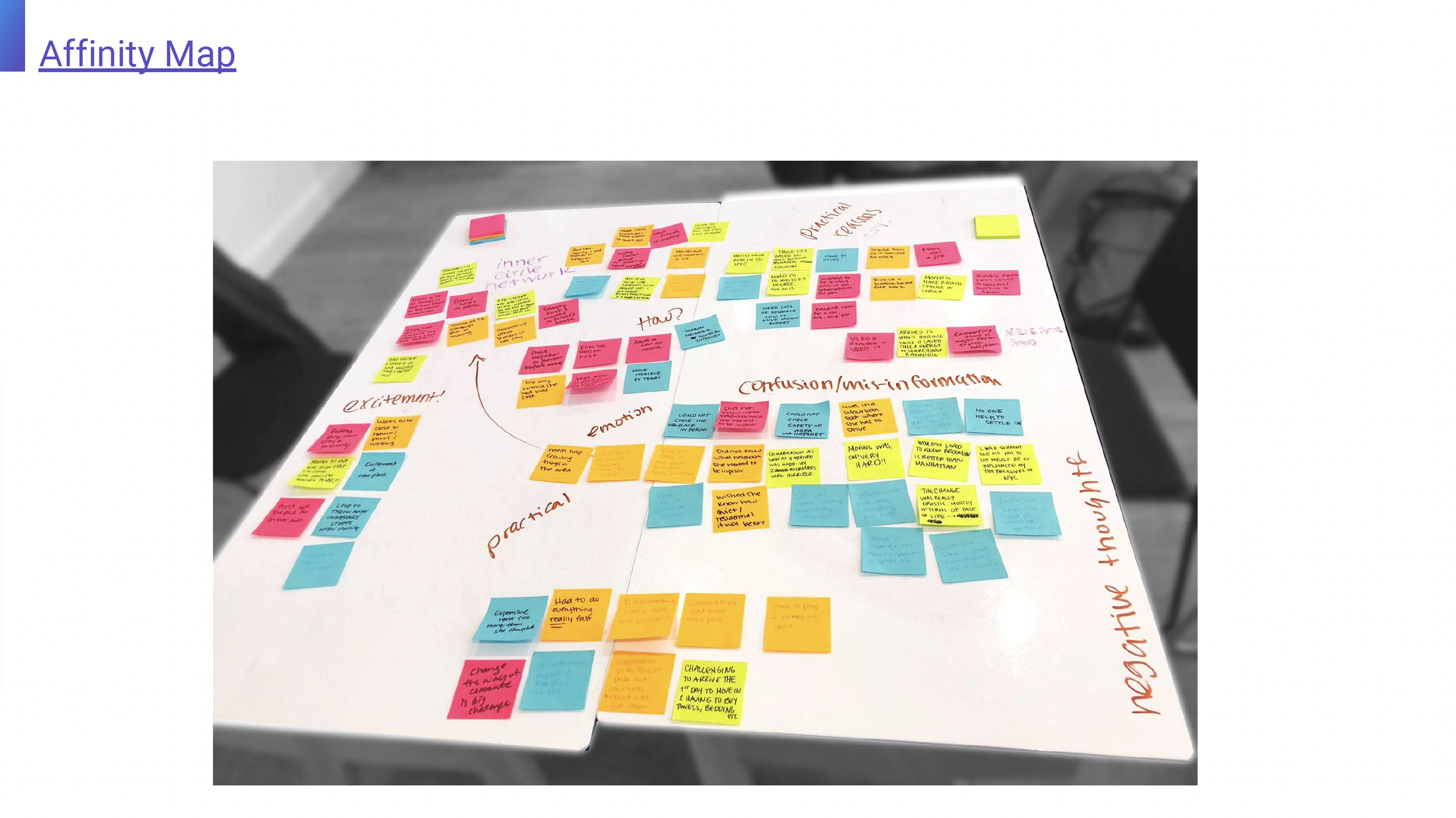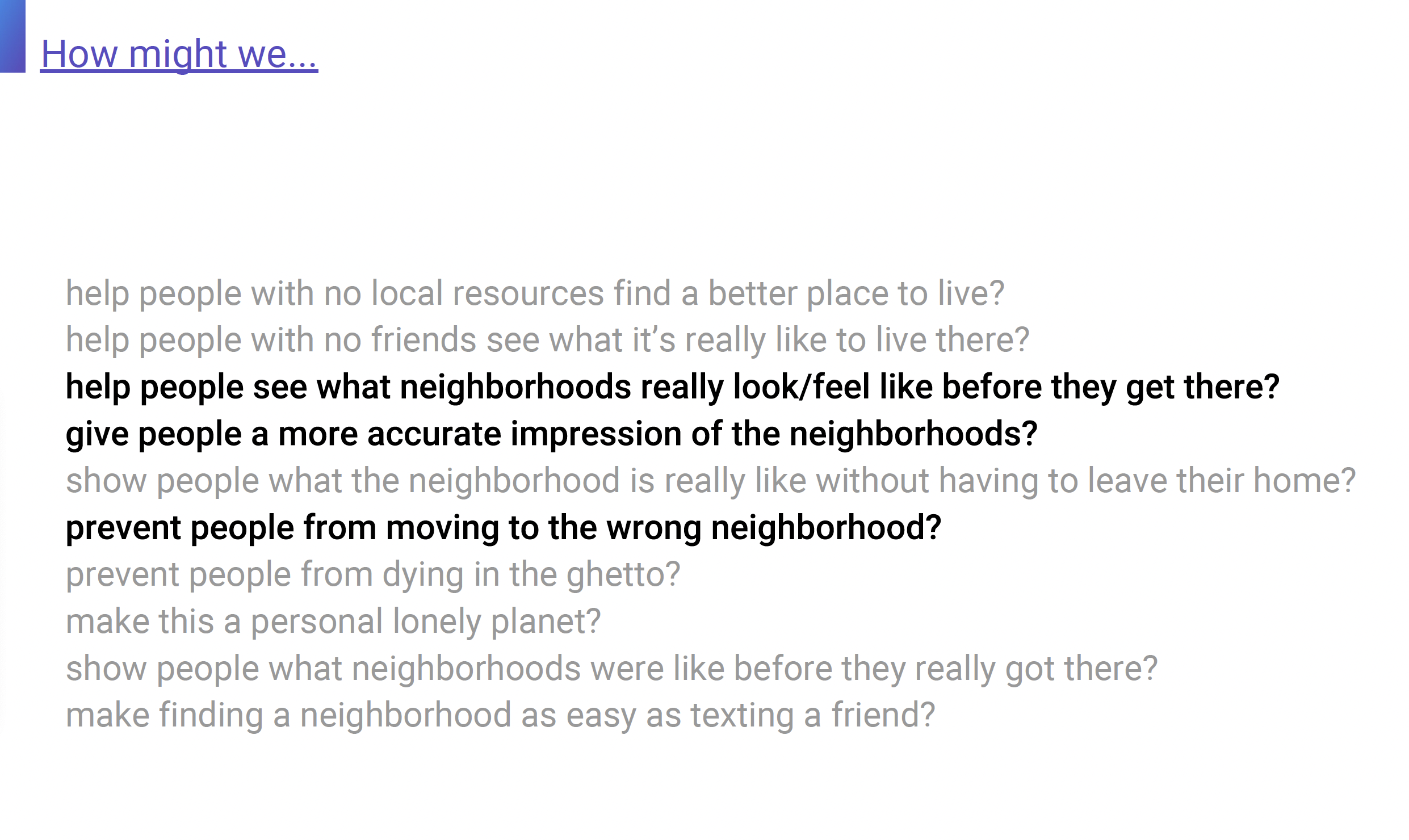Hood Sweet Hood
An App that helps people find the right neighborhood for them
Year: 2018
Team: Liz Brochert, Elle Lee
Background
In the 21st century, people frequently relocate across countries, cities, and neighborhoods. Through our research, we identified a key challenge: choosing the right neighborhood when moving to a new city. Our users needed a reliable way to assess whether a neighborhood truly aligned with their lifestyle and needs—something current online resources often fail to provide. We set out to develop a digital service that empowers users to confidently select a neighborhood that feels like home from the start.
How might we provide people who are moving with an accurate impression of what a neighborhood looks/feels like, thus preventing them from relocating to a location that is wrong for them?
Tools & Methods
-

Research
We interviewed recent city movers to develop personas and uncover common relocation challenges. Concurrently, we conducted secondary research, including competitive analysis and a review of the broader market landscape.
-

Feature Prioritization
We defined the information architecture by identifying the most critical steps users needed to take to achieve their goals. Features were then prioritized based on their ability to support and enhance these key user actions.
-

User Flows
User flows were developed based on the prioritized features, beginning with the Minimum Viable Product (MVP). The structure allowed for future scalability, enabling the extension of flows and addition of features over time.
-

Prototyping & Testing
We initiated the prototyping phase with low-fidelity sketches, guided by the established user flows. After early user testing, we iterated and refined the designs using tools like Sketch and InVision to produce high-fidelity prototypes.
Process
The project began with defining clear research goals. We then conducted interviews with a diverse group of individuals who had moved cities within the past two years. These discussions surfaced common themes, such as the critical role of “insider knowledge.” Participants who had access to local insights typically landed in neighborhoods that fit their needs, while those without such context often ended up dissatisfied with their choice.
Using these insights, we refined our problem statement, developed user personas, and created "How Might We" statements to guide ideation.
Our secondary research included a comprehensive market landscape analysis to identify existing services, products, and gaps within the broader relocation ecosystem, including apps offering matching services. Armed with both primary and secondary insights, we proceeded to feature prioritization, user flow development, and early-stage prototyping. We began with paper mockups, which were progressively refined into detailed wireframes and then into functional digital prototypes. These prototypes were iteratively tested and improved based on user feedback to ensure they effectively met user needs and expectations.
Outputs
We proposed a web application (with plans for a native app version) that matches users with neighborhoods based on their preferences and needs.
Users could explore curated neighborhood profiles that include data on location, transportation access, demographic trends, resident testimonials, and multimedia content.
Once a neighborhood is selected, users receive access to relevant housing listings, local groups, moving companies, and community resources.






















